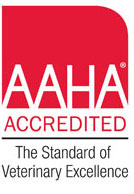Educational Articles
-
Guinea pigs can be hardy and easy to care for when provided an appropriate environment for their unique needs. Like all animals, guinea pigs are susceptible to certain problems and diseases. This handout outlines the diagnosis, treatment, and prognosis for some of the more common health problems of guinea pigs.
-
A pet hedgehog’s diet should mainly consist of high-quality hedgehog food mixed with high-quality, low-fat cat food. The diet may be supplemented with certain insects, fruits, and vegetables, which are listed in this handout. Foods that should be avoided are also listed. Hedgehogs have a propensity for obesity if their food intake is not monitored or controlled.
-
Skin and gut issues are problematic and can be caused by many things, including food allergies. The best way to identify food allergies is through an elimination-challenge diet trial, in which you eliminate potentially allergenic foods and treats for the length of the diet trial, then methodically add foods back into the diet to determine response. If a food allergy is identified, avoiding the food usually results in a good outcome, although some cats develop new allergies in later years.
-
Skin and gut issues are problematic and can be caused by many things, including food allergies. The best way to identify food allergies is through an elimination-challenge diet trial, in which you eliminate potentially allergenic foods and treats for the length of the diet trial, then methodically add foods back into the diet to determine response. If a food allergy is identified, avoiding the food usually results in a good outcome, although some dogs develop new allergies in later years.
-
Infertility in a queen (an intact female cat) is defined as the inability to give birth to live kittens, despite appropriate breeding with a fertile male. This handout provides an outline of common causes of infertility along with how they are diagnosed and, when possible, treated.
-
Once a pet has lost some weight, the new goal is to make sure that excess weight stays off. Pet parents who partner with their veterinary health care team for support and who focus on changing their behaviors often have the most success. Examples of some changes include using a different food or a different feeding method, focusing more on portion control, and incorporating some movement or activity time into each day. This article addresses several commonly asked questions about how to help a pet during the maintenance phase (after the weight has been lost).
-
Picky eaters are often created by their humans offering too much variety of food. Cats can become picky eaters for medical reasons that need to be determined by your veterinarian. It is safe for an otherwise healthy cat to not eat for a few days; beyond this however, they can develop a possibly fatal condition called hepatic lipidosis. To decrease pickiness, having food available for only 30 minutes4-5 times a day can be beneficial. Human food should not be used as a diet as it will lead to nutrient deficiencies. Certain foods are okay to mix with cat food to make them more appealing but check with veterinarian before including these in your dog’s diet. Many cats work on their own schedule and prefer to eat very small amounts frequently (grazing).
-
Picky eaters are often created by their humans offering too much variety of food. It is safe for an otherwise healthy dog to not eat for up to a week. To decrease pickiness, having food available for only 15-30 minutes 2-3 times a day can be beneficial. Human food should not be used as a diet as it will lead to nutrient deficiencies. Certain foods are okay to mix with dog food to make them more appealing but check with your veterinarian before including these in your dog’s diet. Many dogs are not programmed to eat every day.
-
A nutraceutical is a food or food product that reportedly provides health and/or medical benefits. In addition to diet modifications, exercise, weight loss, and medications, joint support nutraceuticals are also helpful in an osteoarthritis management program. Nutraceuticals are not subjected to the same testing and regulation as pharmaceuticals. Your veterinarian can advise you on products that have been evaluated and have yielded positive effects.
-
A nutraceutical is a food or food product that reportedly provides health and medical benefits. Specific nutraceuticals are commonly used in the management of osteoarthritis in dogs. Because nutraceuticals are not subjected to the same testing and regulation as pharmaceuticals, it is always best to consult your veterinarian before giving any to your dog.

